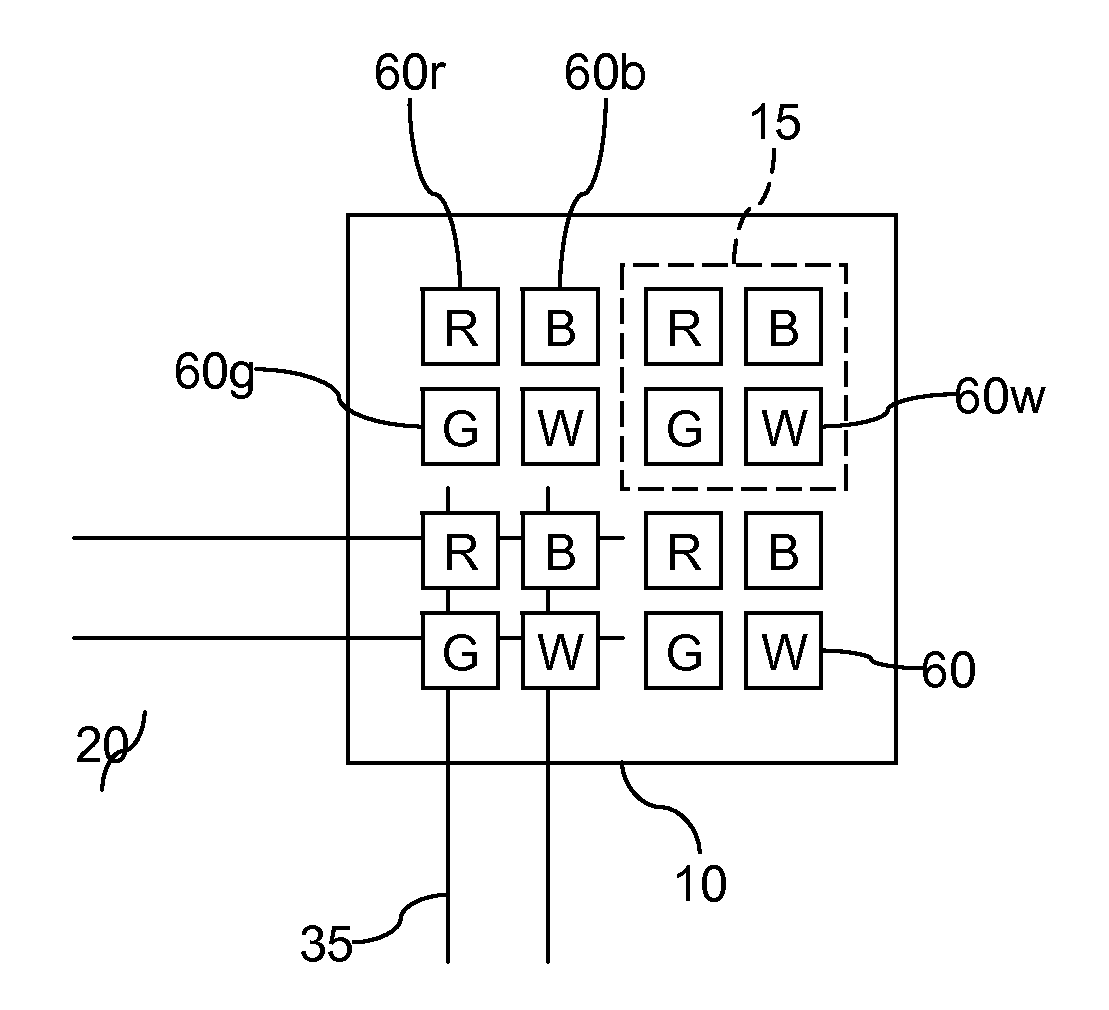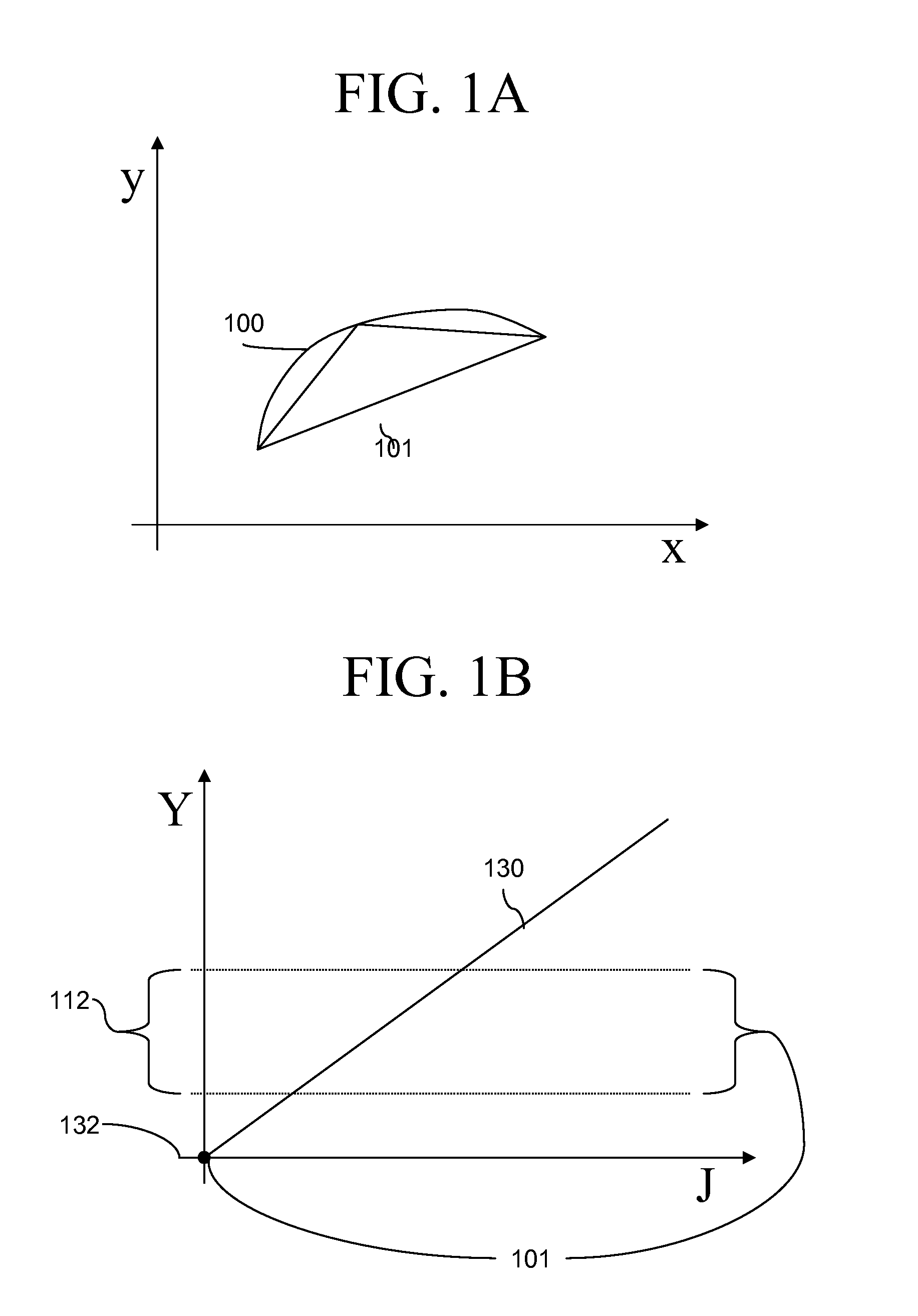Electroluminescent device multilevel-drive chromaticity-shift compensation
a technology of chromaticity shift compensation and electroluminescent devices, which is applied in the field of compensating for chromaticity shift of emitters, can solve the problems of color saturation loss, scaling cannot be restored, color errors, etc., and achieve the effect of providing chromaticity shift compensation and reducing bit depth
- Summary
- Abstract
- Description
- Claims
- Application Information
AI Technical Summary
Benefits of technology
Problems solved by technology
Method used
Image
Examples
Embodiment Construction
[0059]FIG. 9 shows a plan view of an EL display 10 according to an embodiment. EL display 10 has an array of a plurality of EL subpixels 60 arranged in rows and columns and emitting various colors. Subpixels 60r emit substantially red light, subpixels 60g emit green, subpixels 60b emit blue, and subpixels 60w emit broadband light, such as yellow or white. “Broadband light” means light with a broader spectral bandwidth than red, green or blue, e.g., light with a full width at half maximum (FWHM) larger than the FWHM of red, green or blue. Adjacent RGBW subpixels 60r, 60g, 60b, 60w together compose a pixel 15.
[0060]EL display 10 includes a plurality of row select lines 20; each row of EL subpixels 60 has a corresponding select line 20. EL display 10 further includes a plurality of data lines 35 where each column of EL subpixels 60 has an associated data line 35 for readout. Each subpixel 60 includes an EL emitter 50 (FIG. 7). Each subpixel is connected to a respective one of the data ...
PUM
 Login to View More
Login to View More Abstract
Description
Claims
Application Information
 Login to View More
Login to View More - R&D
- Intellectual Property
- Life Sciences
- Materials
- Tech Scout
- Unparalleled Data Quality
- Higher Quality Content
- 60% Fewer Hallucinations
Browse by: Latest US Patents, China's latest patents, Technical Efficacy Thesaurus, Application Domain, Technology Topic, Popular Technical Reports.
© 2025 PatSnap. All rights reserved.Legal|Privacy policy|Modern Slavery Act Transparency Statement|Sitemap|About US| Contact US: help@patsnap.com



